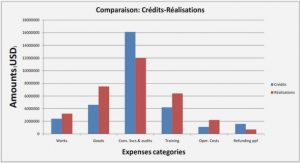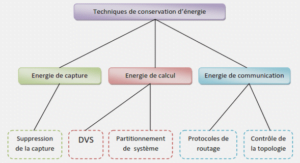This thesis consists of several papers in which we explore different aspects of some classical inverse problems for the Schrödinger equation and the acoustic equation in dimension d ≥ 2. The problems in question are the Gel’fand inverse boundary value problem, the near-field and the far-field inverse scattering problems. According to problems under consideration, papers are divided into three groups. The first deals with the Gel’fand inverse boundary value problem in the usual formulation in which the boundary measurements are represented as the Dirichlet-toNeumann map.
A. M.I. Isaev, R.G. Novikov, Energy and regularity dependent stability estimates for the Gel’fand inverse problem in multidimensions, J. of Inverse and Ill-posed Probl., Vol. 20(3), 2012, 313–325.
B. M.I. Isaev, Exponential instability in the Gel’fand inverse problem on the energy intervals, J. Inverse Ill-Posed Probl., Vol. 19(3), 2011, 453–473.
C. M.I. Isaev, Instability in the Gel’fand inverse problem at high energies, Applicable Analysis, 2012, DOI:10.1080/00036811.2012.731501.
In the second group we continue to consider the inverse boundary value problem for the Schrödinger equation but in the case when the boundary measurements are treated as the impedance boundary map (or Robin-to-Robin map).
D. M.I. Isaev, R.G. Novikov, Stability estimates for determination of potential from the impedance boundary map, Algebra and Analysis, Vol. 25(1), 2013, 37–63.
E. M.I. Isaev, R.G. Novikov, Reconstruction of a potential from the impedance boundary map, Eurasian Journal of Mathematical and Computer Applications, Vol. 1(1), 2013, 5–28. The third group of papers is devoted to inverse scattering problems.
F. M.I. Isaev, R.G. Novikov, New global stability estimates for monochromatic inverse acoustic scattering, SIAM Journal on Mathematical Analysis, Vol. 45(3), 2013, 1495–1504.
G. M.I. Isaev, Exponential instability in the inverse scattering problem on the energy interval, Func. Anal. i ego Pril., Vol. 47(3), 2013, 28–36.
H. M.I. Isaev, Energy and regularity dependent stability estimates for nearfield inverse scattering in multidimensions, Journal of Mathematics, Hindawi Publishing Corp., 2013, DOI:10.1155/2013/318154.
Many physical processes are described by models consisting of systems of partial differential equations. The coefficients of these equations describe the properties of the medium where these processes take place. The so-called inverse problem lies in finding unknown parameters of the model on the basis of the observed data. Most of inverse problems are known to be ill-posed in general, see [8], [46] for an introduction to this theory. This weakness constitutes a severe difficulty for the numerical treatment. Theoretical stability and instability results enables us to quantify ill-posedness of such problems.
There is a wide literature on Problem 1 (especially for Problem 1a). This includes, in particular, the following issues: (a) uniqueness, (b) reconstruction, (c) stability. Global uniqueness for Problem 1a in the case of energy intervals was obtained for the first time by R.G. Novikov (see Theorem 5.4 in [37]). Some global reconstruction method for Problem 1 was proposed for the first time in [37] also. Global uniqueness theorems and global reconstruction methods in the case of fixed energy were given for the first time in [54] in dimension d ≥ 3 and in [16] in dimension d = 2.
Global stability estimates for Problem 1a were given for the first time in [1] in dimension d ≥ 3 and in [67] in dimension d = 2. A principal improvement of the result of [1] was given recently in [65] (for the zero energy case): stability of [65] optimally increases with increasing regularity of v.
Note that for the Calderón problem (of the electrical impedance tomography) in its initial formulation the global uniqueness was firstly proved in [75] for d ≥ 3 and in [50] for d = 2. Global logarithmic stability estimates for this problem were given for the first time in [1] for d ≥ 3 and [47] for d = 2. Principal increasing of global stability of [1], [47] for the regular coefficient case was found in [65] for d ≥ 3 and [72] for d = 2. In addition, for the case of piecewise constant or piecewise real analytic conductivity the first uniqueness results for the Calderón problem in dimension d ≥ 2 were given in [26], [43]. Lipschitz stability estimate for the case of piecewise constant conductivity was proved in [3], [6] and additional studies in this direction were fulfilled in [11], [69]. An abstract general schema for investigating similar stability questions in different inverse problems is given in [15].
The optimality of the logarithmic stability estimates of [1], [47] with their principal effectivization of [65], [72] was shown in [48] (up to the value of the exponent). Note also that similar instability results for the elliptic inverse problem concerning the determination of inclusions in a conductor by different kinds of boundary measurements and the inverse obstacle acoustic scattering problems were given in [24], where some general scheme for investigating questions of this type of instability has been also proposed.
Problem 1 can be also considered for the case when the observed data are given only on a part of the boundary, see, for example, [2], [5], [17], [25], [40], [42] and references therein. In addition, Problem 1 can be also considered in its versions on manifolds, see, for example, [9], [10], [35], [38], [39], [73] and references therein.
On the other hand, it was found in [58], [60] (see also [63], [68]) that for inverse problems for the Schrödinger equation at fixed energy E in dimension d ≥ 2 (like Problem 1) there is a Hölder stability modulo an error term rapidly decaying as E → +∞ (at least for the regular coefficient case). This phenomena of increasing stability with respect to some parameter such as energy or wave number has been also observed numerically (see, for example, [22] for the inverse obstacle scattering problem).
In addition, for Problem 1a for d = 3, global energy dependent stability estimates changing from logarithmic type to Hölder type for high energies were given in [41]. However, there is no efficient stability increasing with respect to increasing coefficient regularity in these results of [41]. An additional study, motivated by [41], [65], was given in [51].
|
Table des matières
Introduction
Bibliography
Paper A. Energy and regularity dependent stability estimates for the Gel’fand inverse problem in multidimensions
1. Introduction
2. Stability estimates
3. Faddeev functions
4. Proof of Theorem 2.1
Bibliography
Paper B. Exponential instability in the Gel’fand inverse problem on the energy intervals
1. Introdution
2. Stability estimates and main results
3. Some basic properties of Dirichlet-to-Neumann map
4. A fat metric space and a thin metric space
5. Proofs of the main results
6. Bessel functions
Bibliography
Paper C. Instability in the Gel’fand inverse problem at high energies
1. Introduction
2. Main results
3. Some properties of solutions of the Schrödinger equation in the unit ball
4. Proofs of Proposition 2.1 and Theorem 2.1
5. Proof of Lemma 3.2
Bibliography
Conclusion
![]() Télécharger le rapport complet
Télécharger le rapport complet






